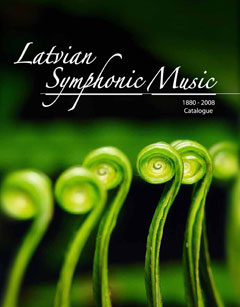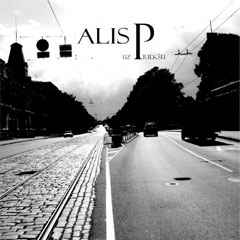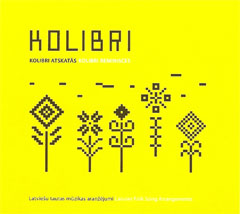Twenty years after Latvian-Swedish band Alis P released its first album, the sole remaining member has returned with Uz priekšu. The group was founded in 1979 by Gundars Rullis (vocals and bass), Māris Rozenbahs (drums) and Pēteris Šmitmanis (guitar), and released its first album, Alis iet pastaigāt, in 1988.
Today, Rullis is the only remaining member of the group, and performed all guitar, bass and vocal parts on Uz priekšu. He was joined in the recording by Swedish drummer Svante Drake.
Alis P has always been a “do it yourself” kind of group. The spirit of its music has been based in simplicity, rather than complex arrangements and songs —an almost “punk” style, if you will. In fact, the album notes state that “the songs were recorded and worked on in the kitchen and in bedrooms.” However, Alis P has been influenced by many different types of music throughout the years, including new wave, blues, rock, punk, even folk elements (the band’s Latvian version of Bob Dylan’s “Shelter from the Storm,” entitled “Aizvēja,” was a hit for both Alis P and Bet Bet).
Uz priekšu is certainly a unique record in the Latvian rock world. Where today many groups concentrate more on making sure all their songs have a slick and polished song, Alis P happily presents an enjoyably rough-around-the-edges style of music, with the focus being on the songs themselves. With many recordings today, one can tell that computers were overused when creating the music, taking much of the soul and spark out of the music. Thankfully, Uz priekšu exhibits quite the opposite: a vitality and freshness that one doesn’t hear much of in Latvia.
Rullis’ lyrics contain a notable amount of sentiment and reflection, even after 30 years. As if to answer the question about why it took 20 years to release another album, the song “Kā var 20 gadi” reflects upon the quick passage of time and asks where did all the time go, with Rullis mentioning many things he would still like to do in life, such as see the art of Michelangelo in Rome and eat oysters in France.
Another song along those same lines is “Arī panki precās,” about how even punks, who supposedly rebel against just about everything that has come previously, eventually do settle down and get married and have children, as well as reflecting on their past with humor.
Certainly, the rock element of this record is not missing, as exhibited by the rough riffing of the opening number “Gaismas ceļš,” and the aggressive sounds of “Es gribu (iet gulēt),” where Rullis is joined by members of Latvian hard rock ensemble Dzelzs vilks on the chorus. There is also the dirty blues of “Vienmēr bēdas,” where Rullis lists things that can bring sadness, including cholesterol, bills, debts, not to mention women.
A more mellow moment on the record is “Tālu, tālu Latvijā,” a melancholic song about those who choose to stay in Latvia, and those who choose to depart to live and work elsewhere. Also, the tiny village of Naukšēni in northern Latvia gets another mention in a rock song (Labvēlīgais tips had first name-dropping it in its song “Naukšēnu disko”).
The song I like the most on the album is “Atzīstos,” which, at first listen, is simply about enjoying riding around Rīga on the tram. But the song is far deeper than that. It is about how even a tram can be a source of peace and tranquility at times, and of all the different types of people and places that can be seen from the windows—even in a smaller city like Riga.
Rullis speaks lyrics by Latvian-Swedish poet Juris Kronbergs in the song “Ņujorka,” where Kronbergs details an adventure around New York City and the many different types of people and places he encounters on that journey.
Twenty years is certainly a long time to wait for another album, but Alis P has made a record that made it worthwhile. With Rullis’ honest, plainspoken lyrics, not to mention simple, yet effective, songs, Uz priekšu is a refreshing change of pace from the slew of overproduced albums to be found in record stores today. At times exuberant, other times somber and subdued, this record is a truly emotional journey covering many different styles and sonic textures, making for a very enjoyable album.
Details
Uz priekšu
Alis P
Gauja Records, 2009
GAUJA 006
Track listing:
Gaismas ceļš
Zinu, zinu
Kā var 20 gadi
Uz priekšu
Vienmēr bēdas
Man salst
Es gribu (iet gulēt)
Atzīstos
No Tapešu ielas
Arī panki precas
Tālu, tālu Latvijā
Ņujorka
On the Web
The Web site of Alis P provides a history of the band and samples of its music. LV
Egils Kaljo is an American-born Latvian from the New York area . Kaljo began listening to Latvian music as soon as he was able to put a record on a record player, and still has old Bellacord 78 rpm records lying around somewhere.






